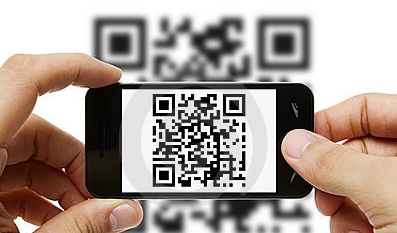How to Make A Successful Marketing Campaign with QR Codes
 The QR code is an inspiring marketing tool that is used in a variety of different industries.
However, how can your company emulate the mobile marketing successes like Toyota, Starbucks, Victoria’s secret, or Pepsi? To effectively use QR codes, it must first be understood that its engagement style differs completely from traditional digital marketing in several ways.
Mobile engagement is contextual
Like we mentioned in this article about mobile customer engagement, customers generally use their smartphones in relation to what they are currently doing at the moment. Customers in a shoe store will probably compare the price point of a pair of shoes for several different locations.
Mobile engagement includes CTAs
In terms of mobile marketing strategy, customers must be given a clear call-to-action (CTA) that makes sense to them. A randomly floating QR code with no explanation will most likely just be ignored. Explain your intentions and the results of opting in to your QR promotion strategies.
Mobile engagement must be simple and instantaneous
In this modern era, people easily leave if there’s a delay or complication in the process. Therefore, any mobile experience should be straightforward and seamless from the beginning to end.
So with this mindset in place, here are some practical tips based on some of the best QR code campaigns to get your own mobile marketing strategy off the ground.
Create value for your audience
If you were the customer, would you honestly be interested in signing up using the QR code? Is the hassle of the whole process worth the end result od the promotional campaign? If you honestly do not think many customers would be interested in the deal, it may be time to rethink your campaign.
Link to a mobile optimized site
According to this study by Google,
The QR code is an inspiring marketing tool that is used in a variety of different industries.
However, how can your company emulate the mobile marketing successes like Toyota, Starbucks, Victoria’s secret, or Pepsi? To effectively use QR codes, it must first be understood that its engagement style differs completely from traditional digital marketing in several ways.
Mobile engagement is contextual
Like we mentioned in this article about mobile customer engagement, customers generally use their smartphones in relation to what they are currently doing at the moment. Customers in a shoe store will probably compare the price point of a pair of shoes for several different locations.
Mobile engagement includes CTAs
In terms of mobile marketing strategy, customers must be given a clear call-to-action (CTA) that makes sense to them. A randomly floating QR code with no explanation will most likely just be ignored. Explain your intentions and the results of opting in to your QR promotion strategies.
Mobile engagement must be simple and instantaneous
In this modern era, people easily leave if there’s a delay or complication in the process. Therefore, any mobile experience should be straightforward and seamless from the beginning to end.
So with this mindset in place, here are some practical tips based on some of the best QR code campaigns to get your own mobile marketing strategy off the ground.
Create value for your audience
If you were the customer, would you honestly be interested in signing up using the QR code? Is the hassle of the whole process worth the end result od the promotional campaign? If you honestly do not think many customers would be interested in the deal, it may be time to rethink your campaign.
Link to a mobile optimized site
According to this study by Google,
- 50% of people leave a mobile-unfriendly website even if they really like a business.
- 74% of people say they’re more likely to return to a mobile friendly site
- 67% of mobile users say that when they visit a mobile-friendly site, they’re more likely to make a purchase.
- Smartphone cameras (resolution/auto-focus)
- Reader apps
- Scan context (i.e. lighting, shadows, surfaces)
- Scan distance
- Scan timing
Related Articles
Mobile Marketing Campaigns
- Facebook Contests for Mobile
- Twitter Contests for Mobile
- Planning a Mobile Marketing Strategy
- Tracking and Measuring your Mobile Advertising Campaign
